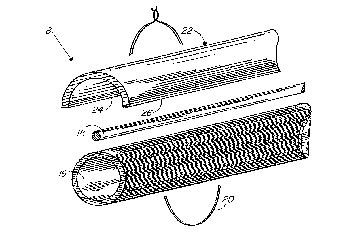Some of the information on this Web page has been provided by external sources. The Government of Canada is not responsible for the accuracy, reliability or currency of the information supplied by external sources. Users wishing to rely upon this information should consult directly with the source of the information. Content provided by external sources is not subject to official languages, privacy and accessibility requirements.
Any discrepancies in the text and image of the Claims and Abstract are due to differing posting times. Text of the Claims and Abstract are posted:
| (12) Patent: | (11) CA 1323986 |
|---|---|
| (21) Application Number: | 1323986 |
| (54) English Title: | SAP COLLECTING DEVICE |
| (54) French Title: | DISPOSITIF DE COLLECTE DE SEVE |
| Status: | Expired and beyond the Period of Reversal |
| (51) International Patent Classification (IPC): |
|
|---|---|
| (72) Inventors : |
|
| (73) Owners : |
|
| (71) Applicants : |
|
| (74) Agent: | LAVERY, DE BILLY, LLP |
| (74) Associate agent: | |
| (45) Issued: | 1993-11-09 |
| (22) Filed Date: | 1989-09-28 |
| Availability of licence: | N/A |
| Dedicated to the Public: | N/A |
| (25) Language of filing: | English |
| Patent Cooperation Treaty (PCT): | No |
|---|
| (30) Application Priority Data: | None |
|---|
ABSTRACT OF THE DISCLOSURE
The disclosure herein describes a device for
use in conducting sap collected from maple trees to a
sap-processing unit, particularly during sunny days; it
comprises a tubular member in which sap is contained
and conveyed to the sap-processing unit and a parasol
mounted exteriorly of the tubular member for preventing
high angled sun rays to be absorbed in the tubular
member and to affect the sap flowing during the day but
allowing low angled sun rays to be absorbed in part of
the tubular member to allow frozen sap to defreeze and
flow in the morning. The parasol consists of a semi-
cylindrical elongated member mounted over the tubular
member and is spaced therefore so as to define an air
chamber between the tubular member and the semi-
cylindrical member.
Note: Claims are shown in the official language in which they were submitted.
Note: Descriptions are shown in the official language in which they were submitted.

2024-08-01:As part of the Next Generation Patents (NGP) transition, the Canadian Patents Database (CPD) now contains a more detailed Event History, which replicates the Event Log of our new back-office solution.
Please note that "Inactive:" events refers to events no longer in use in our new back-office solution.
For a clearer understanding of the status of the application/patent presented on this page, the site Disclaimer , as well as the definitions for Patent , Event History , Maintenance Fee and Payment History should be consulted.
| Description | Date |
|---|---|
| Time Limit for Reversal Expired | 2005-11-09 |
| Letter Sent | 2004-11-09 |
| Grant by Issuance | 1993-11-09 |
There is no abandonment history.
| Fee Type | Anniversary Year | Due Date | Paid Date |
|---|---|---|---|
| MF (category 1, 4th anniv.) - standard | 1997-11-10 | 1997-09-22 | |
| MF (category 1, 5th anniv.) - standard | 1998-11-09 | 1998-10-06 | |
| MF (category 1, 6th anniv.) - standard | 1999-11-09 | 1999-11-02 | |
| MF (category 1, 7th anniv.) - standard | 2000-11-09 | 2000-10-26 | |
| MF (category 1, 8th anniv.) - standard | 2001-11-09 | 2001-09-04 | |
| MF (category 1, 9th anniv.) - standard | 2002-11-11 | 2002-10-09 | |
| MF (category 1, 10th anniv.) - standard | 2003-11-10 | 2003-11-07 |
Note: Records showing the ownership history in alphabetical order.
| Current Owners on Record |
|---|
| IPL INC. |
| Past Owners on Record |
|---|
| JEAN-MARIE CHABOT |